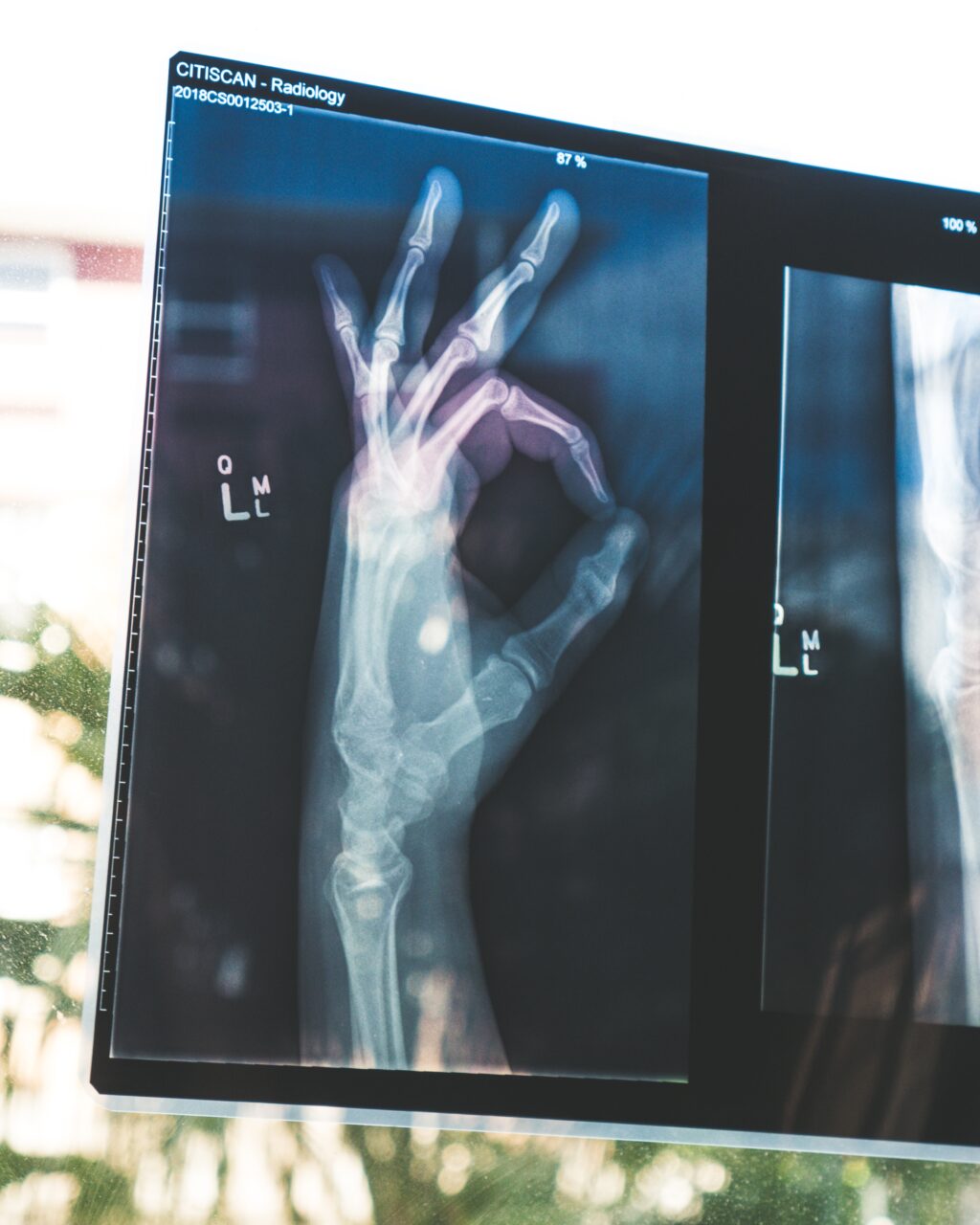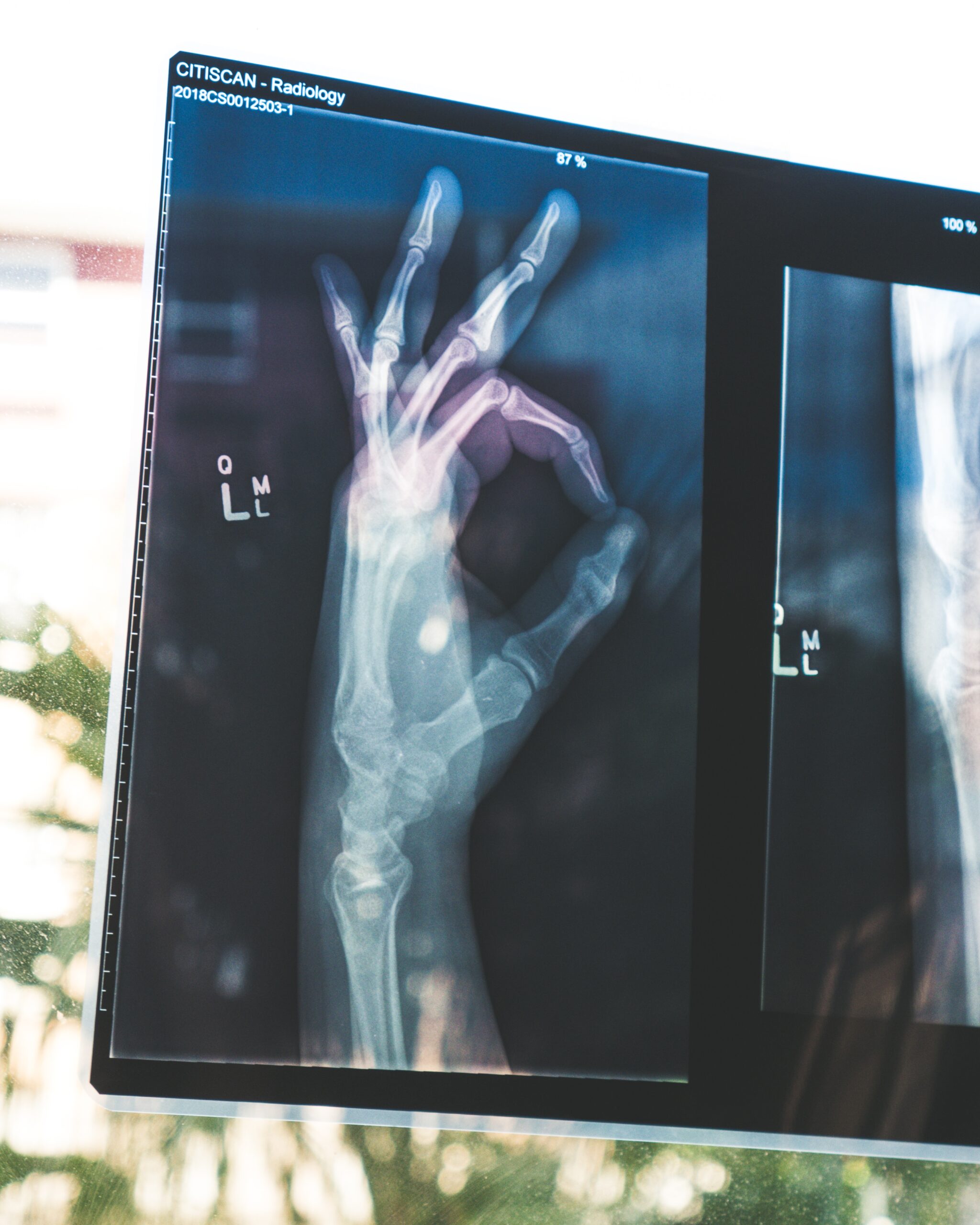
How Do Physical Therapy Exercises Improve Lumbar Spine Health?
If you've ever experienced lower back pain, you know just how debilitating it can be. From simple tasks like bending over to tie your shoes, to more strenuous activities like lifting heavy objects, a compromised lumbar spine can greatly impact your daily life. But fear not, as physical therapy exercises offer a ray of hope in improving the health of your lumbar spine. By targeting specific muscles in your back, these exercises help to strengthen and stabilize your spine, promote proper alignment, and alleviate pain. Let's explore how these exercises work their magic and bring relief to your aching back.
What is Physical Therapy?
Physical therapy, also known as physiotherapy, is a branch of healthcare that focuses on the assessment, treatment, and management of physical conditions and disabilities. It utilizes various techniques and exercises to promote mobility, function, and overall well-being. The goal of physical therapy is to optimize physical health, enhance quality of life, and prevent further injuries or complications.
Definition of Physical Therapy
Physical therapy involves the use of manual techniques, exercise therapy, and other modalities to treat a wide range of musculoskeletal, neurological, and cardiopulmonary conditions. It is a holistic approach that takes into account the individual's physical, psychological, and social well-being. Physical therapists are highly trained professionals who assess the patient's condition, develop a personalized treatment plan, and guide them throughout the rehabilitation process.
Role of Physical Therapy in Rehabilitation
Physical therapy plays a crucial role in the rehabilitation of individuals with various conditions, injuries, or surgeries. It helps restore physical function, reduce pain, improve mobility and strength, and promote independence. Physical therapists work closely with patients to design and implement customized treatment plans that address their specific needs and goals. They play a key role in helping individuals regain their physical capabilities and regain their quality of life.
Understanding Lumbar Spine Health
The lumbar spine, also known as the lower back, is a complex structure consisting of vertebrae, discs, ligaments, muscles, and nerves. It plays a vital role in supporting the upper body, allowing movements such as bending, twisting, and lifting. Maintaining the health of the lumbar spine is essential for overall physical well-being and functionality.
Anatomy of the Lumbar Spine
The lumbar spine consists of five vertebrae, labeled L1 to L5, and the intervertebral discs that lie between them. These discs cushion the vertebrae and allow for shock absorption during movement. The lumbar spine is supported by numerous ligaments, tendons, and muscles, which provide stability and facilitate movement. The nerves that branch out from the spinal cord in the lumbar region transmit signals to and from the lower extremities.
Common Lumbar Spine Disorders
The lumbar spine is susceptible to various disorders and conditions that can cause pain and limit mobility. Some common lumbar spine disorders include:
- Herniated Disc: A condition in which the soft inner material of a spinal disc protrudes through the tougher outer layer, causing pain and possible nerve impingement.
- Spinal Stenosis: A narrowing of the spinal canal that can compress the spinal cord or nerves, leading to pain, numbness, and weakness.
- Degenerative Disc Disease: The gradual deterioration of the intervertebral discs, resulting in pain, stiffness, and limited motion.
- Spondylolisthesis: A condition in which one vertebra slips forward or backward in relation to the adjacent vertebra, causing pain and instability.
- Sciatica: Compression or irritation of the sciatic nerve, resulting in pain, tingling, and numbness that radiates down the leg.
Importance of Lumbar Spine Health
The lumbar spine plays a crucial role in enabling everyday activities and movements. It provides support to the upper body, maintains proper posture, and facilitates bending, lifting, and twisting motions. When the lumbar spine is compromised due to injury or a disorder, it can significantly impact a person's quality of life. Maintaining lumbar spine health is essential for pain-free movement, optimal function, and overall well-being.

This image is property of images.unsplash.com.
Benefits of Physical Therapy for Lumbar Spine Health
Physical therapy offers numerous benefits for the health and well-being of the lumbar spine. By targeting specific areas of concern and using evidence-based techniques, physical therapists can help individuals manage pain, regain mobility, and improve overall function. Some of the key benefits of physical therapy for lumbar spine health are:
Pain Reduction
One of the primary goals of physical therapy is to alleviate pain associated with lumbar spine disorders. Physical therapists use various modalities, such as heat or cold therapy, manual therapy techniques, and electrical stimulation, to reduce pain and inflammation. They also educate patients on proper body mechanics and techniques to prevent exacerbation of pain.
Improved Range of Motion
Physical therapy exercises focus on stretching and mobilizing the lumbar spine, which helps improve range of motion. By targeting specific muscles and joints, physical therapists can effectively restore flexibility and movement. Through customized exercise programs, individuals can gradually increase their range of motion, allowing for more comfortable and pain-free movement.
Strengthening the Lumbar Spine
Strengthening exercises are a fundamental component of physical therapy for lumbar spine health. Physical therapists develop personalized exercise regimens that target the muscles supporting the lumbar spine, such as the abdominal, back, and hip muscles. These exercises help increase muscle strength, stability, and endurance, reducing the risk of further injury and improving overall spinal health.
Promoting Proper Body Mechanics
Physical therapists educate individuals on proper body mechanics and postural alignment to minimize stress and strain on the lumbar spine. By teaching proper lifting techniques, posture correction, and ergonomics, physical therapists enable individuals to perform daily activities with greater efficiency and reduced risk of injury.
Enhanced Flexibility and Balance
Physical therapy incorporates stretching exercises to improve flexibility and balance, which are essential for maintaining lumbar spine health. Stretching helps increase muscle elasticity and joint mobility, reducing the risk of muscle imbalances and contributing to overall spinal stability.
Preventing Recurrence of Injuries
Physical therapy focuses not only on addressing current lumbar spine issues but also on preventing future injuries or recurrences. Through targeted exercises, education, and lifestyle modifications, physical therapists empower individuals to make long-term changes that promote optimal lumbar spine health and minimize the risk of future problems.
Different Types of Physical Therapy Exercises for Lumbar Spine Health
Physical therapy exercises for lumbar spine health encompass various modalities and techniques. Physical therapists design personalized exercise programs based on the individual's condition, specific goals, and overall health. Some of the different types of physical therapy exercises for lumbar spine health include:
Stretching Exercises
Stretching exercises are used to improve the flexibility and range of motion of the lumbar spine. Physical therapists guide individuals through specific stretches that target the muscles and ligaments surrounding the lumbar spine, such as the hamstrings, hip flexors, and back muscles.
Strengthening Exercises
Strengthening exercises aim to improve the strength and stability of the lumbar spine. Physical therapists prescribe exercises that target the core muscles, including the abdominal, back, and hip muscles. These exercises may involve using resistance bands, stability balls, or even bodyweight exercises.
Aerobic Exercises
Aerobic exercises, such as walking, swimming, or cycling, promote cardiovascular health and overall fitness. Engaging in regular aerobic activities not only improves cardiovascular function but also helps maintain a healthy weight, relieving stress on the lumbar spine.
Core Stability Exercises
Core stability exercises focus on strengthening the deep abdominal and back muscles, which play a crucial role in supporting the lumbar spine. Physical therapists guide individuals through exercises that improve core strength, stability, and endurance, promoting better posture and reducing the risk of injury.
Postural Correction Exercises
Poor posture can contribute to the development or exacerbation of lumbar spine conditions. Physical therapists teach individuals postural correction exercises that help align the spine and promote optimal posture. These exercises may involve specific stretching and strengthening techniques to address postural imbalances and improve overall alignment.

This image is property of images.unsplash.com.
Precautions and Considerations
While physical therapy exercises offer numerous benefits for lumbar spine health, it is important to take certain precautions and considerations into account to ensure safety and effectiveness. Consulting a physical therapist, maintaining proper form and technique, gradual progression, individualization of exercise programs, monitoring and minimizing discomfort, and avoiding overexertion and injury are key aspects to keep in mind.
Consulting a Physical Therapist
Before starting any physical therapy exercises, it is crucial to consult with a licensed physical therapist. They will assess your condition, provide a proper diagnosis, and develop a personalized treatment plan tailored to your specific needs and goals. Physical therapists have the expertise and knowledge to guide you through each step of your rehabilitation journey.
Proper Form and Technique
It is important to maintain proper form and technique during physical therapy exercises to ensure optimal results and minimize the risk of injury. Physical therapists will provide instruction and guidance on the correct form for each exercise, monitoring your movements to ensure proper alignment and execution.
Gradual Progression
Physical therapy exercises should be gradually progressed to prevent overexertion and promote gradual improvement. Physical therapists will carefully monitor your progress and adjust the intensity and difficulty of exercises as needed. It is important to listen to your body and communicate any discomfort or pain to your physical therapist.
Individualization of Exercise Programs
Each individual has unique needs, capabilities, and goals. Physical therapy exercise programs are customized to address these specific factors. Physical therapists take into account your age, overall health, limitations, and preferences when designing your personalized exercise program. This individualized approach ensures that you receive the most effective and appropriate care for your lumbar spine health.
Monitoring and Minimizing Discomfort
While physical therapy exercises may cause some discomfort, it is important to distinguish between productive discomfort and pain that may indicate further injury. Physical therapists will closely monitor your response to exercises and make adjustments as needed to minimize discomfort and ensure your safety.
Avoiding Overexertion and Injury
It is crucial to avoid overexertion and excessive strain on the lumbar spine during physical therapy exercises. Following your physical therapist's instructions regarding exercise frequency, duration, and intensity will help prevent further injury and promote optimal healing and recovery.
Specific Physical Therapy Techniques for Lumbar Spine Health
Physical therapists utilize various techniques to address specific lumbar spine conditions and promote overall spinal health. Some of the specific physical therapy techniques commonly used for lumbar spine health include:
Manual Therapy
Manual therapy involves hands-on techniques performed by the physical therapist to manipulate and mobilize the lumbar spine. This may include joint mobilizations, soft tissue mobilizations, and manual traction to relieve pain, improve mobility, and restore normal movement patterns.
Joint Mobilization
Joint mobilization techniques aim to restore normal joint movement and relieve pain or stiffness. Physical therapists use gentle, controlled movements to mobilize the lumbar spine joints, enhancing their range of motion and promoting proper alignment.
Soft Tissue Mobilization
Soft tissue mobilization techniques involve applying pressure and manipulating the muscles, tendons, and fascia surrounding the lumbar spine. This helps release tension, reduce muscle spasms, and improve blood flow to the affected area, promoting healing and pain relief.
Traction
Traction involves applying a pulling force to the lumbar spine to decompress the spinal discs and relieve pressure on the nerves. Physical therapists may utilize manual traction or mechanical devices to achieve this effect, reducing pain and improving overall spinal health.
Ultrasound Therapy
Ultrasound therapy utilizes high-frequency sound waves to promote tissue healing, reduce inflammation, and relieve pain. The ultrasound waves penetrate deep into the soft tissues, providing therapeutic benefits to the lumbar spine region.
Electrical Stimulation
Electrical stimulation, also known as e-stim, involves the use of electrical currents to stimulate the muscles and nerves surrounding the lumbar spine. This can help reduce pain, promote muscle contraction and relaxation, and improve overall function.

This image is property of images.unsplash.com.
Combining Physical Therapy with Other Treatment Modalities
Physical therapy can be combined with other treatment modalities to enhance its effectiveness and achieve optimal results. Some modalities that can complement physical therapy for lumbar spine health include:
Medication Management
Depending on the severity and nature of the lumbar spine condition, medication management may be incorporated into the treatment plan. This may include the use of pain relievers, anti-inflammatory medications, or muscle relaxants to manage symptoms and facilitate the rehabilitation process.
Injections for Pain Relief
In certain cases, injections may be recommended to provide targeted pain relief in the lumbar spine. These injections may include corticosteroids to reduce inflammation or nerve blocks to temporarily block pain signals.
Heat and Cold Therapy
Heat and cold therapy are commonly used adjuncts to physical therapy for lumbar spine health. Heat therapy, such as hot packs or warm water therapy, helps promote blood flow, relax muscles, and alleviate pain. Cold therapy, such as ice packs or cold compresses, helps reduce inflammation and numb the area, providing pain relief.
Acupuncture
Acupuncture is an ancient Chinese therapy that involves the insertion of thin needles into specific points on the body. It can be used in conjunction with physical therapy to alleviate pain, reduce inflammation, and promote overall well-being.
Chiropractic Care
Chiropractic care focuses on the diagnosis and manual treatment of musculoskeletal disorders, particularly those of the spine. Combining chiropractic care with physical therapy can offer a holistic approach to lumbar spine health, addressing both joint dysfunction and musculoskeletal imbalances.
Individualized Physical Therapy Plans
Physical therapy for lumbar spine health involves the development and implementation of individualized treatment plans. These plans are tailored to the specific needs, goals, and limitations of each individual. The key components of individualized physical therapy plans include:
Assessment and Evaluation
Physical therapists perform comprehensive assessments and evaluations to gather information about the individual's medical history, current condition, limitations, and goals. This information is used to develop a personalized treatment plan that addresses the specific needs and concerns of the individual.
Goal Setting
Collaboration between the physical therapist and the individual is essential for setting realistic and achievable goals. These goals may include pain reduction, improved mobility, increased strength, or the ability to perform specific activities. Establishing clear goals helps guide the treatment plan and keeps individuals motivated throughout the rehabilitation process.
Designing a Personalized Exercise Program
Physical therapists design personalized exercise programs based on the individual's condition, goals, and physical capabilities. These exercise programs typically include a combination of stretching, strengthening, aerobic, and core stability exercises. The exercises are gradually progressed to ensure optimal results and minimize the risk of injury.
Progress Monitoring
Throughout the course of physical therapy, progress monitoring is essential to track improvements, make adjustments to the treatment plan, and ensure that goals are being met. Physical therapists regularly assess the individual's function, range of motion, strength, and overall well-being to evaluate progress and make necessary modifications to the exercise program.
Modifications and Adaptations
As individuals progress through their physical therapy program, their needs and abilities may change. Physical therapists are skilled at making modifications and adaptations to the exercise program to address these changes. Whether it's adjusting exercise intensity, adding new exercises, or modifying techniques, the physical therapist ensures that the program remains effective and safe.

Success Stories and Research
There are countless success stories of individuals who have improved their lumbar spine health through physical therapy. Personal anecdotes and testimonials provide real-life examples of the positive impact physical therapy can have on an individual's quality of life. In addition to success stories, there is a wealth of evidence-based research supporting the efficacy of physical therapy for lumbar spine health.
Real-life Examples of Improved Lumbar Spine Health through Physical Therapy
Many individuals have experienced significant improvements in their lumbar spine health through physical therapy. For example, individuals with herniated discs have reported a reduction in pain and increased range of motion after completing a physical therapy program. Those with spinal stenosis have seen improvements in walking distance and overall function.
Evidence-based Studies on the Efficacy of Physical Therapy for Lumbar Spine Health
Scientific research consistently supports the use of physical therapy for the management and improvement of lumbar spine health. Numerous studies have shown that physical therapy interventions, such as exercise therapy, manual therapy, and patient education, can effectively reduce pain and disability, improve function and quality of life, and prevent recurrent episodes of lumbar spine disorders.
Conclusion
Physical therapy is a valuable and effective approach to maintaining and improving lumbar spine health. It offers numerous benefits, including pain reduction, improved range of motion, strengthened muscles, enhanced flexibility and balance, and the prevention of recurrence of injuries. By combining various physical therapy techniques and exercises, individuals can achieve optimal spinal health, regain function, and improve their overall well-being. If you are experiencing lumbar spine issues, it is encouraged to seek professional help and invest in your personal well-being through physical therapy. Remember, your lumbar spine health is an essential component of your overall physical health and quality of life.







